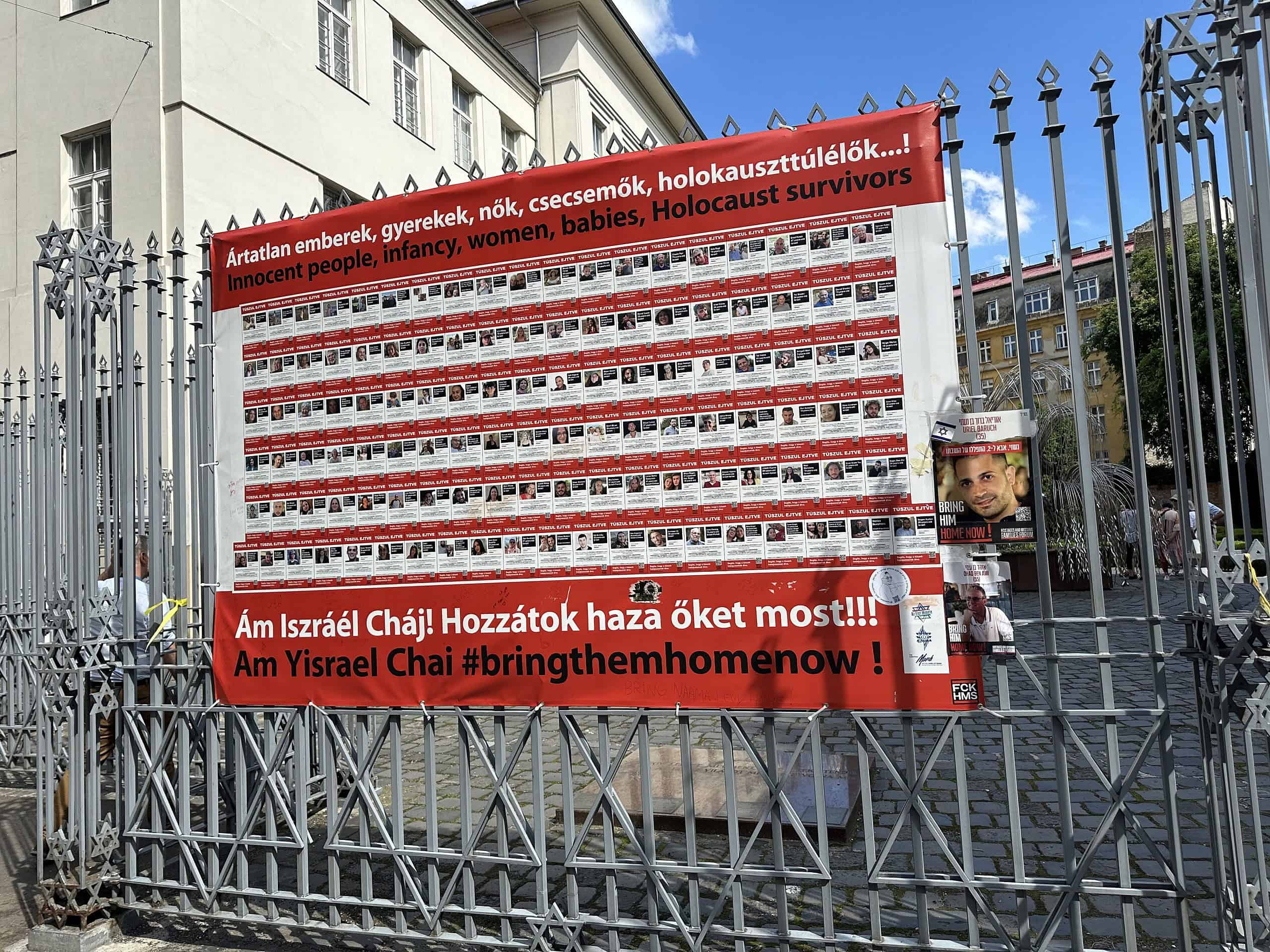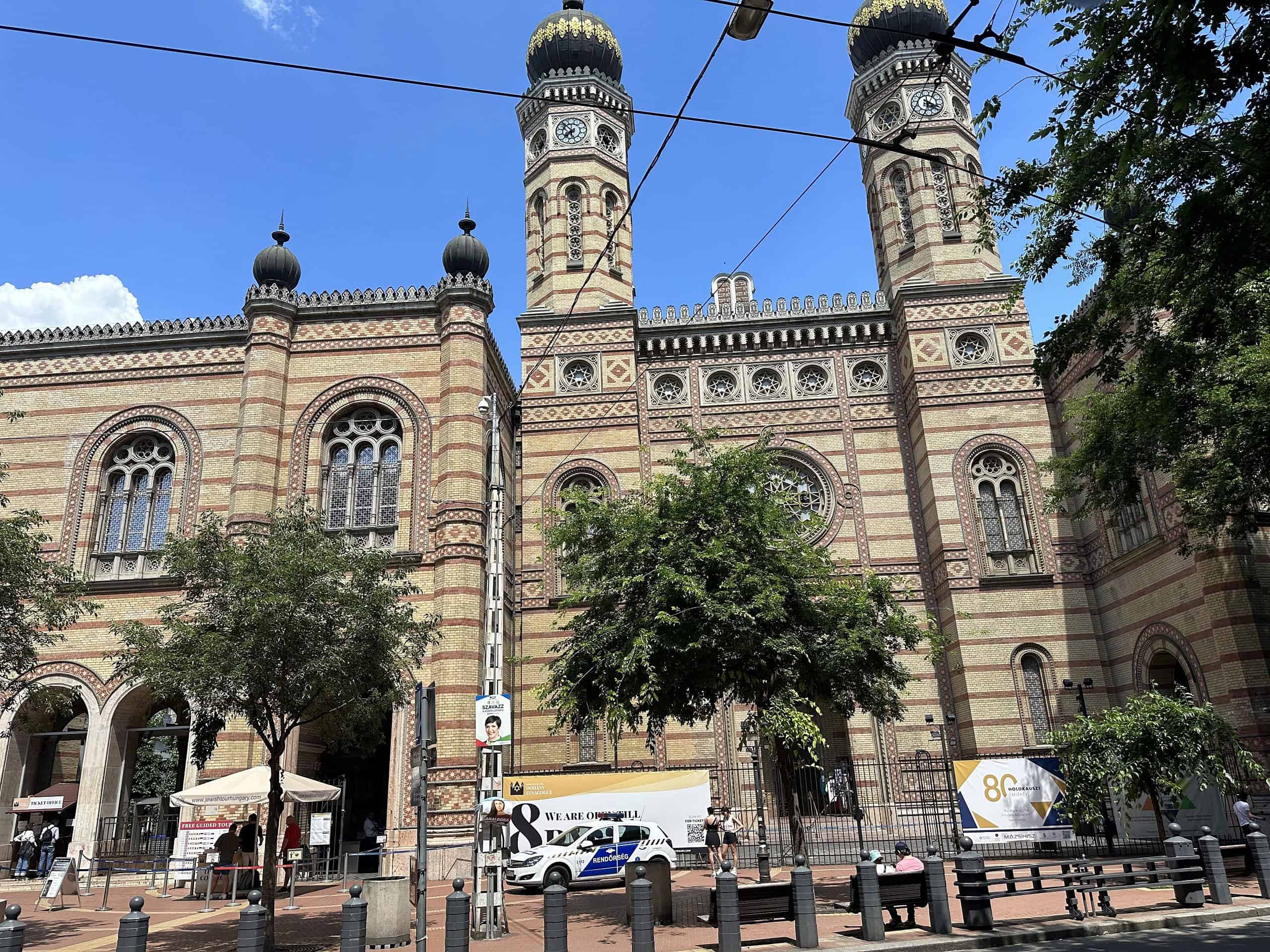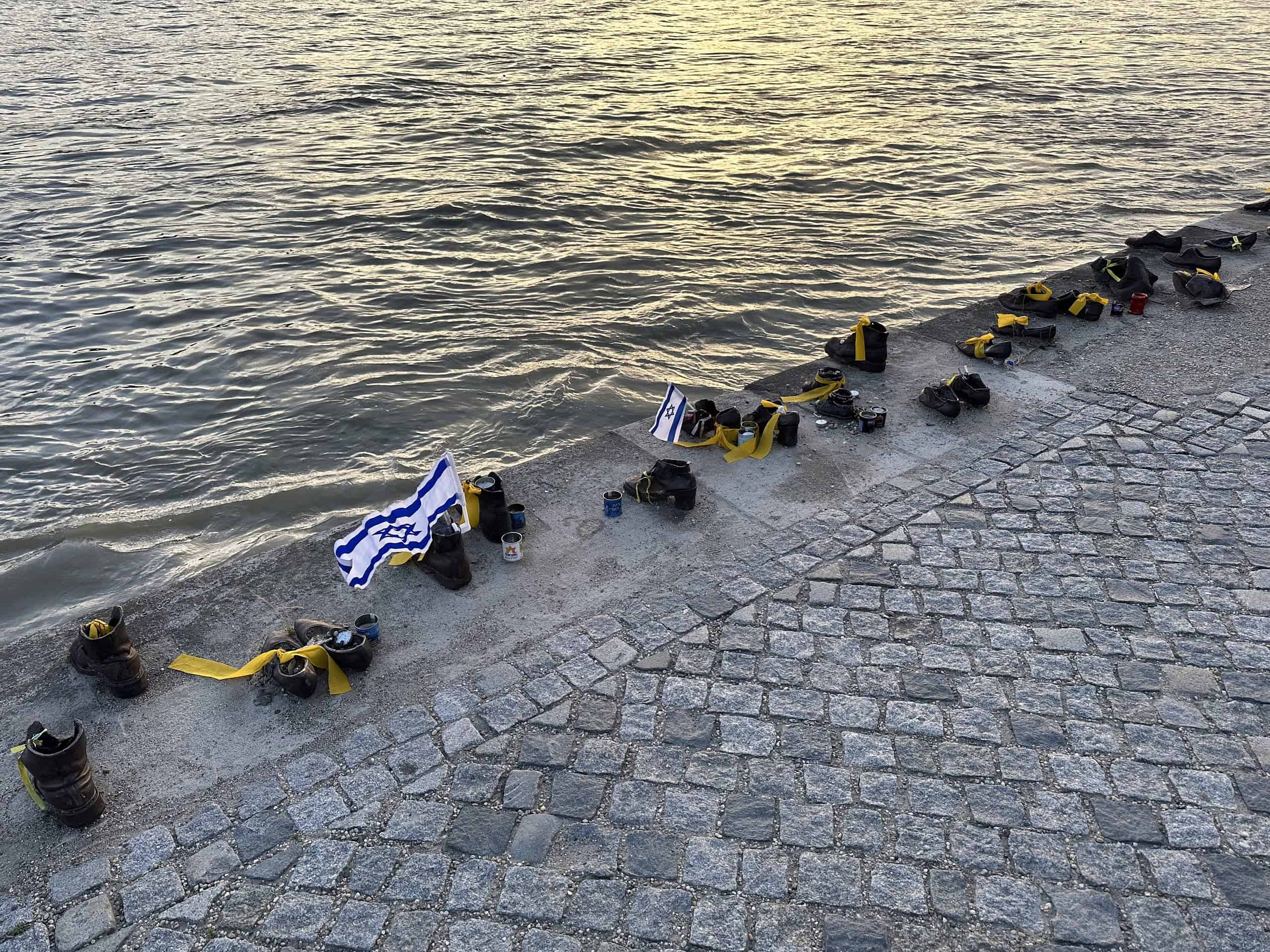 Antyrządowe protesty w Tel Awiwie (Zrzut z ekranu wideo)
Antyrządowe protesty w Tel Awiwie (Zrzut z ekranu wideo)
 Izrael cierpi na nadmiar demokracji
Izrael cierpi na nadmiar demokracji
Victor Rosenthal
Tłumaczenie: Małgorzata Koraszewska
Elity polityczne, wywiadowcze i wojskowe Izraela okazały się niekompetentne. Nie udało im się przewidzieć, zapobiec, ani nawet skutecznie zareagować na inwazję z 7 października. Zamienili militarne sukcesy wojny w coś, co wydaje się być poddaniem się wszystkim żądaniom Hamasu.
Przez lata kreowali wizerunek Izraela jako worka treningowego, a nie dumnego i potężnego narodu, jakim jest. Pomimo naszej armii uzbrojonej w broń nuklearną, pozwolili Iranowi otoczyć nas swoimi grupami terrorystycznymi, a nawet ustanowić w Libanie siły odstraszające, którym boimy się rzucić wyzwanie. Pozwolili samemu Iranowi zdobyć broń nuklearną.
W dniu 13 kwietnia 2024 r. Iran przeprowadził atak na Izrael, w którym wykorzystano setki dronów, rakiet manewrujących i rakiet balistycznych, co było największym takim atakiem w historii wojskowości. Wszystkie oprócz kilku zostały przechwycone przez Izrael z pewną pomocą USA i innych; koszt tej operacji obronnej dla Izraela oszacowano na ponad 1 miliard dolarów. Gdyby atak się powiódł, cele wojskowe i infrastrukturalne uległyby ogromnym zniszczeniom, a także byłoby bardzo wiele ofiar śmiertelnych. Izrael odpowiedział kilka dni później, niszcząc jakieś instalacje radarowe w Iranie. Słabość reakcji Izraela była wynikiem nacisków USA i odstraszającego efektu irańskiego pełnomocnika Hezbollahu
W kraju nasi przywódcy pozwolili AP na systematyczne pożeranie części Strefy C w Judei/Samarii, która na mocy traktatu międzynarodowego powinna znajdować się pod pełną izraelską kontrolą. Zezwolili, a następnie legitymizowali nielegalne osadnictwo Beduinów na Negewie. Pozwolili na rozkwit arabskich syndykatów przestępczych na Negewie i w Galilei, a także w miastach arabskich i miastach mieszanych arabsko-żydowskich.
Dziesiątki tysięcy obywateli Izraela uciekło ze swoich domów: na południu ze strachu przed odradzającym się terroryzmem Hamasu, a na północy przed codziennymi bombardowaniami Hezbollahu rakietami i bronią przeciwpancerną, które spustoszyły miasta i miasteczka w okolicy. Kiedy to piszę, w północnych miastach płoną wielkie pożary wywołane rakietami Hezbollahu.
Nasze rządy są nieskuteczne, są sparaliżowane sporami w kwestiach takich jak reforma sądownictwa i projekt charedim, nękane przez potężne lobby i grupy, którymi manipulują różne podmioty polityczne. Dwie największe mniejszości, izraelscy Arabowie i charedim, utrzymują w naszym państwie autonomiczne „państwa”, w których prawa i nieformalne porozumienia regulujące resztę populacji niekoniecznie mają zastosowanie.
Wielu izraelskich Arabów, z godnym uwagi wyjątkiem Druzów i niewielkiej liczby Beduinów, nie akceptuje zasady, że Izrael jest państwem żydowskim, nie służy w wojsku i w wielu przypadkach unika płacenia podatków i innych obowiązków. Charedim odmawiają służby wojskowej i utrzymują system edukacji, w którym nie naucza się „świeckich” przedmiotów, takich jak matematyka i współczesny język hebrajski.
Z powodu wojny żołnierze rezerwy mają teraz służyć przez 90 dni w roku, co jest destrukcyjne dla życia rodzinnego, pracy, a zwłaszcza niezależnych przedsiębiorstw. Jednocześnie dziesiątki tysięcy uczniów jesziwy zostało zwolnionych z poboru. Próby zmiany tego stanu spotkały się z demonstracjami blokującymi główne drogi i groźbami obalenia rządu ze strony polityków charedich. Rządy izraelskie od dziesięcioleci bezskutecznie próbują znaleźć kompromis umożliwiający podział obciążeń związanych z bezpieczeństwem.
***
Co można zrobić? Co trzeba zrobić, aby zachować państwo żydowskie, zapobiec kolejnemu rozproszeniu Żydów i przywrócić Izraelowi rolę obrońcy społeczności żydowskich w diasporze? Jak zawsze, istnieją odpowiedzi krótkoterminowe i długoterminowe. Dziś naszym najważniejszym zmartwieniem musi być wojna w Gazie. Dopóki Hamas będzie nadal kontrolował Strefę, faktycznie stracimy dużą część naszego kraju, która pozostanie niezdatna do zamieszkania, a Siły Obronne Izraela będą unieruchomione i niezdolne do reagowania na inne zagrożenia. Co ważniejsze, jeśli Izrael zostanie pokonany przez taktykę terroru Hamasu – i nie dajcie się zwieść, porozumienie na wzór tego ogłoszonego w zeszłym tygodniu przez prezydenta USA będzie odebrane przez cały świat jako miażdżąca porażka – nasi wrogowie na wszystkich frontach przyniosą nam więcej 7 październików.
Strategia zwycięstwa Hamasu zależy od dwóch głównych słabości Izraela: publicznej troski o zakładników (i manipulacji tą obawą przez działaczy politycznych sprzeciwiających się rządowi) oraz podatności Izraela na naciski amerykańskie.
Okrucieństwo Hamasu i sytuacja zakładników rozdziera serca wszystkich Izraelczyków. Ale jeśli nie zdarzy się cud, nie ma rozwiązania, które sprowadzi ich do domu za cenę, na jaką naród może sobie pozwolić. Musimy powiedzieć ich rodzinom: nie możemy przehandlować państwa żydowskiego za waszych bliskich. Musimy zrobić wszystko, co w naszej mocy, aby ich ocalić, ale nie możemy w tym celu poddać się naszemu morderczemu wrogowi. Złudzeniem jest myślenie, że możemy zgodzić się na 6-tygodniowe zawieszenie broni (nie wspominając o innych żądanych ustępstwach), biorąc pod uwagę presję ze strony Ameryki i innych frontów wojny, a następnie powrócić, aby wykończyć Hamas. To się nie zdarzy.
Administracja USA zrobiła i nadal robi wszystko, co w jej mocy, poza interwencją wojskową po stronie Hamasu, aby uniemożliwić Izraelowi osiągnięcie zdecydowanego zwycięstwa. Izraelscy przywódcy muszą zrozumieć, że nie możemy wygrać, jeśli będziemy przestrzegać dyrektyw Waszyngtonu. Muszą powiedzieć Amerykanom wszystko, co chcą usłyszeć, ale rozkazać IDF dokończyć robotę, odsunąć Hamas od władzy i zniszczyć jego potencjał militarny.
***
Pisanie tego jest bolesne, ale obawiam się, że nasz obecny rząd może nie być w stanie podjąć działań niezbędnych do przetrwania państwa. Co gorsza, struktura polityczna naszego państwa może być źle przystosowana do przetrwania na dzisiejszym Bliskim Wschodzie.
Podsumowałbym problem stwierdzeniem, że Izrael cierpi na nadmiar demokracji. Jest wiele rzeczy wspaniałych w prawdziwie demokratycznym państwie: teoretycznie potrafi ono zachowywać się sprawiedliwie wobec jednostek o różnorodnych interesach i potrzebach. Jest to sposób na dostosowanie polityki kraju do „powszechnej woli” społeczeństwa, według słów Rousseau. Niestety są pewne szczególne sytuacje, w których demokracja nie jest optymalna.
Jednym z nich jest stan wojny. W czasie wojny należy podejmować decyzje, które sprzyjają zwycięstwu, ale powodują cierpienie społeczeństwa lub wpływowych grup. Często takich decyzji nie można podjąć w sposób demokratyczny.1 Przykładem jest pytanie, czy Izrael powinien zaakceptować porozumienie, które uwolni część zakładników, ale także uwolni wielu uwięzionych terrorystów i nałoży ograniczenia na prowadzenie wojny.
Innym problematycznym przypadkiem są duże mniejszości, które wykorzystują instytucje demokratyczne, takie jak wybory, do prowadzenia „polityki tożsamości”, a nie polityki zorientowanej na konkretne problemy. W Izraelu, oprócz podziałów etnicznych i religijnych, spotykamy ugruntowane podgrupy ideologiczne. W latach 2019–2021 w połączeniu z naszym skomplikowanym systemem wyborczym doprowadziły do czterech wyborów parlamentarnych w ciągu dwóch lat. Napięcie między wybranym Knesetem a niezależną biurokracją, która reprezentuje dawną elitę rządzącą Izraela, gwarantuje impas w ważnych kwestiach. Ponadto trwająca niemal dekadę próba obalenia premiera Netanjahu przy wykorzystaniu wymiaru sprawiedliwości, przy wsparciu większości mediów i środowiska akademickiego, odwracała uwagę i obciążała obie strony.
Izrael jest niemal stale pogrążony w wojnie i obdarzony dużymi mniejszościami etnicznymi/religijnymi. Zatem jego aspiracje do bycia państwem demokratycznym działają przeciwko możliwości stworzenia skutecznego rządu. A wyzwania stojące przed małym państwem żydowskim na Bliskim Wschodzie absolutnie wymagają przywództwa, które funkcjonuje optymalnie.
Biorąc pod uwagę stosunki władzy w naszym społeczeństwie politycznym, jest mało prawdopodobne, aby istniała gładka droga, (na przykład wspólnie wykuta konstytucja), do nowej formy rządów. Jednak odpowiedzialność państwa wobec obywateli i narodu żydowskiego jako całości wymaga, aby w każdym przypadku dokonało ono tej zmiany, niezależnie od zakłócenia normalnego życia, jakie może to za sobą pociągać.
________________________
1 Ale czy demokracje nie pokonały nazistów podczas II wojny światowej? W rzeczywistości zarówno Roosevelt, jak i Churchill zachowywali się jak dosłowni dyktatorzy. A Stalin…
Victor Rosenthal – Urodzony w Stanach Zjednoczonych, studiował informatykę i filozofię na University of Pittsburgh. Zajmował się rozwijaniem programów komputerowych. Mieszka obecnie w Izraelu. Publikuje w izraelskiej prasie. Jego artykuły często zamieszcza Elder of Ziyon.
Zawartość publikowanych artykułów i materiałów nie reprezentuje poglądów ani opinii Reunion’68,
ani też webmastera Blogu Reunion’68, chyba ze jest to wyraźnie zaznaczone.
Twoje uwagi, linki, własne artykuły lub wiadomości prześlij na adres:
webmaster@reunion68.com











